By Kevin M. Hymel
Lieutenant General Omar Bradley had reason to be pleased by the last week of July 1944. His First Army had scratched out a substantial foothold on the Normandy coast, capturing three times more French territory than his British allies. He had cut off the Cherbourg peninsula to the west and pushed his army south. His carpet bombing of the German Army south of St. Lo, Operation Cobra, helped crack the enemy line. But his four corps, composed mostly of infantry, were still only inching forward. It had taken him almost two months to advance approximately 80 square miles. He needed to win the war faster than this.
“I’ll take him into battle on a litter if we have to,”
To Bradley, the key to victory was capturing ports. With most of the Allied supplies coming across the beaches of Normandy, and only a trickle coming from the destroyed port at Cherbourg, he knew if he could push his army south, he could pivot to the west into Brittany and gain access to the ports of St. Malo, Brest, and Lorient. And the key to Brittany was the mountaintop town of Avranches, with the See River crossing north of the town and the Selune River crossing south. If the Cherbourg Peninsula was the forearm of a raised left arm, the Brittany Peninsula would be the bicep and Avranches would be the inner crook of the elbow, a vital town indeed.
Bradley’s First Army was becoming unmanageably large. So far in the war, American armies had usually consisted of two or three corps; the First Army now consisted of four. From east to west were the V Corps under Leonard Gerow, XIX Corps under Charles Corlett, VII Corps under Joe Collins, and the VIII Corps under Troy Middleton. Both the V and VII Corps had fought their way up from the Normandy beaches. The XIX and VIII were committed to the fight on July 3, but only managed to advance five to seven miles south in 17 days of fighting.
Behind Bradley, soldiers and weapons were pouring into Normandy. He knew that once he had more room, he would commit Lt. Gen. George S. Patton Jr.’s Third Army to the fight. Patton, who had led troops to success in North Africa and Sicily, was a proven commander who pushed men forward through a combination of leadership, smart tactics, personal example, and profane language.
Major General Troy Middleton was relatively new to corps command but he was no stranger to combat. In 1915, he had fought in Mexico and led an infantry regiment in World War I as the youngest colonel in the Army, earning a Distinguished Service Cross. He left the Army in 1937 and later became the vice president of Louisiana State University. Called back into service in 1943, he successfully led the 45th Infantry Division through the capture of Sicily and into Italy. An arthritic knee sent him home, but he was called back to service by General Dwight Eisenhower, who needed his experience to help liberate France.
“I’ll take him into battle on a litter if we have to,” Ike reportedly told General George C. Marshall, the Army chief of staff. Now Middleton’s VIII Corps held the extreme right flank of the army with Joe Collins to his left and the Gulf of St. Malo to his right. At his disposal were four infantry divisions, the 8th, 79th, 83rd, and 90th, and two armored divisions, the 4th and 6th.
American Armored Divisions: Unproven Beasts
Infantry and armored divisions were two widely different weapons of war. In World War II, an infantry division consisted of three infantry regiments commanded by a colonel and supported by tank and artillery battalions, some 13,000 men. An infantry division moved at the pace of a soldier’s feet. Tanks supported the infantry wherever the going got tough. Armored divisions also consisted of three formations, each commanded by a colonel. They were called Combat Commands and were designated either A, B, or R (for Reserve). Each one consisted of a tank battalion and an armored infantry battalion, with armored field artillery battalions sometimes attached.
In an attack, the tank battalion, consisting of approximately 70 tanks, led the charge, followed by the armored infantry battalion, consisting of 1,000 soldiers riding in half-tracks, who dismounted to wipe out anything the tanks left behind. Armored divisions, with a total of more than 200 tanks, were designed for speed, maneuver, and hitting power.
But American armored divisions had yet to prove themselves in the war. In North Africa, the 1st Armored Division never got the knack for exploitation. In Sicily, the 2nd Armored Division was limited to supporting the infantry, and in Italy, the 1st was restricted to the roads as it moved up mountainsides. In Normandy, Collins had already deployed his 2nd and 3rd Armored Divisions, but they fought in swampy areas and only partially committed to the fight. Troy Middleton knew what an infantry division could do, but he was not so sure about tanks and openly expressed his reservations about using armor for exploitation.
Armor Strikes in Operation Cobra
Operation Cobra’s ground attack kicked off on July 25, with Collins committing three infantry divisions into the breach made by the bombers. Despite poor gains, he committed his two armored divisions into the attack to speed things up. The 2nd and 3rd Armored Divisions were bigger than the rest of the other American armored divisions (they had been organized as “heavy,” divisions with two large regiments before armored divisions were slimmed down to three smaller combat commands) and they had experience. Collins tasked the 3rd with capturing Coutances, the first major town on the route south to Avranches.
The next day, Bradley committed the VIII Corps to action but Middleton put the 8th and 90th Infantry Divisions into the van, advancing only a mile. Within 24 hours, Middleton realized that German resistance had crumbled, but minefields were holding up his infantry. Despite his reservations, he ordered his 4th and 6th Armored Divisions to lead the way.
Grow and Wood
The leaders of the 4th and 6th were two very different men. Major General John “P” Wood was an outspoken and passionate artilleryman who later became a tanker. He earned the nickname “P” for professor because he tutored so many of his fellow cadets at West Point. He served as an ordnance officer in World War I and attended the staff college at Langres in France with Patton before returning home. He served with Patton again at the Command and General Staff College at Fort Leavenworth, and later became Patton’s artillery commander in the 2nd Armored Division.
An artillery specialist, Wood served in armored units from 1941 until he took command of the 4th Armored in May 1942. He endeared his men to him through his leadership, individual care of his soldiers, and by challenging superiors who found fault with his bold tactics. He was not above hugging his men when they did well, and he listened to them. When an officer told him that the white star on the front of American tanks was being used by the German tankers as a bull’s-eye, Wood ordered all the stars on the 4th’s tanks to be painted over black.
Stone-faced and businesslike Maj. Gen. Robert Grow, like Patton, had begun his career in the cavalry. But, unlike Patton, he shifted to armor development in 1930, spending much of his time with the mechanized cavalry at Fort Knox while Patton returned to the cavalry. Yet, for all his hard work developing tank tactics, Grow had earned Patton’s ire. During the Louisiana Maneuvers of 1941, where entire armies fought mock battles across the Cajun state, Colonel Grow told Patton how he had enjoyed a delicious oyster supper. Patton, knowing Grow’s men were on the march toward an objective, chewed him out for irresponsible behavior. It was a lesson Patton hoped the younger officer would remember.
“Get Rid of That Gun!”
Before sunrise on July 28, 1944, these two division commanders led their troops through the infantry and charged the Germans. Waves of tanks pushed through the hedgerow country, filling the air with the deafening roar of engines and the smell of gasoline. Half-tracks followed, packed with soldiers. Bringing up the rear were mobile artillery, tracked tank retrievers, and supply trucks. The war of maneuver had begun.
The armored spearheads sliced through battered German defenses and raced south to Coutances. The men of the 6th found enemy resistance light and advanced some eight miles before noon. The 4th did even better. Despite being delayed three hours in a minefield, its tanks broke free and reached Coutances before noon, only to find the Germans still in force. Elements of CCB under Brig. Gen. Holmes Dager began pushing south through the city, wrestling for control. Tanks blasted buildings as armored infantrymen dueled with German soldiers hiding in the rubble. Unhappy with his division’s progress, General Wood took the battle into his own hands.
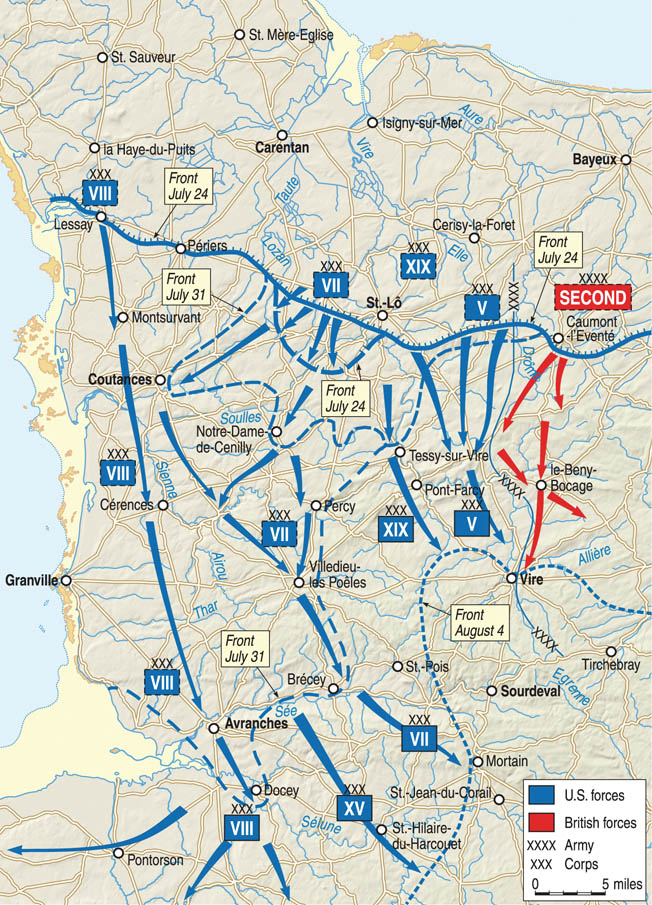
Wood walked the town’s street under fire and captured a German soldier; he maneuvered through a minefield, penciling a note to Dager to “send the infantry through after me.” When he spotted a German 88mm artillery piece in an alley knocking out vehicles, he ran up to a nearby M18 Hellcat tank destroyer and ordered the crew, “Pull up in front of that damned alley and get rid of that gun!” The crew turned its 76mm cannon 90 degrees and raced to the alley entrance, where the driver hit the brakes. The sudden charge must have surprised the Germans because the Hellcat crew got off two shots, shattering the weapon.
“Thanks!” Wood told the crew. “Those damn Heinies were holding up the war.”
Getting the Troops “Blooded”
The sun was setting by the time the 4th had fought its way through Coutances and cleared a string of mines at a bridge south of the town. The men began taking up defensive positions when tanks from the 3rd Armored rolled in to take their objective. The 4th had beaten the larger, more experienced unit to their goal.
Meanwhile, back at First Army headquarters, Bradley assigned Patton as the VIII Corps’ temporary commander. Why he did this was never really explained. In his first memoir, Bradley explained that he did it because the corps would eventually become part of Third Army. Bradley also had a habit of committing units piecemeal to the front to get the troops “blooded.” He may have been doing the same to Patton, who had been waiting almost two months to get back into action. Or Bradley may have just gotten tired of Patton pestering him about bringing Third Army into the war.
Patton learned of his new command around 6 pm. Bradley added that he wanted Patton to line up his XV Corps, which had been forming off the beaches of Normandy, next to the VIII immediately. It would be officially announced on August 1—the birth of Third Army on the Continent. Patton rushed to VIII Corps’ headquarters with his staff but acted casually to keep Middleton’s staff focused on the battle at hand. When he got back to his headquarters, Patton called Bradley and suggested dropping paratroopers around the Selune River dams. He was already thinking about Avranches.
Patton had more than a new command to be happy about. The day before, one of his subordinates said that General Marshall had told a correspondent: “Bradley will lead the invasion, but he is just a limited-objective General. When we get moving, Patton is the man with the drive and the imagination to do the dangerous things fast.”
A very pleased Patton penned in his diary, “This is very fine if true.”
“Present Mission Cancelled… Move on Avranches”
The next morning, July 29, Wood and Grow sought to keep pushing to the south. Grow was charged with capturing Avranches, while Wood was tasked with driving east of Avranches and blocking any German counterattacks. Grow had a tougher time of it. His 6th bulled ahead five miles south but stopped south of Coutances at the Sienne River. His intelligence reported that every bridge over the river had been destroyed by the retreating Germans. He drove to the river where he found Brig. Gen. James Taylor, the commander of CCA, and the two men spread out a map on the ground to search for a decent place to ford.
As this was going on, a command car pulled up and out stepped Patton, none too pleased. He asked Grow what he was doing, and Grow explained that Taylor was looking for a place to cross. Possibly thinking that Patton needed him for something, he added that he, personally, was doing nothing. Patton, controlling his temper, asked Grow if he had been down to look at the river. When Grow abruptly responded “no,” Patton exploded, telling him that unless he did something he would be out of a job. Patton then turned and walked down to the shallow river, finding it only a foot deep with just a few Germans on the far bank, who did not fire a shot at him. He ordered Grow to cross the river with his whole division, then he turned and left.
Grow complied. He supported Taylor’s river crossing with every gun in the division. Tanks and men splashed across the river and chased any remaining Germans up the heights of the hills on the opposite bank. Engineers soon began building a bridge for the rest of the division. Grow, humiliated and not looking for a repeat performance, ordered his CCB to take over the attack the next day in hopes for better success.
Meanwhile, the soldiers of the 4th, flushed with their Coutances victory, slashed south so quickly that two artillery battalions had to leapfrog each other just to keep up with the vanguard. But the drive was not perfect. With so few roads south of Coutances, tanks from the 2nd Armored Division crossed near the 4th and came under friendly fire. It quickly ended when an officer of the 2nd radioed in and threatened to call “P.” The men of the 4th recognized their commander’s nickname and stopped firing. The mood in the combat command changed when they got word from Wood. “Present mission cancelled—using any roads [in zone] … move on Avranches … to capture and secure crossings east thereof.” Patton, after his confrontation with Grow, did not relieve him of his job, but he did relieve him of his mission. The 4th Armored was now running with the ball to Avranches.
The Fight for Avranches
Dager’s CCB approached the town from the east and west. The eastern column, composed exclusively of armored infantry, encountered heavy German resistance. Panzers opened up on a line of half-tracks and quickly destroyed six of them. The Americans responded by bringing up their antitank guns, which knocked out one of the panzers. The Germans pulled back and then attacked again. They set up guns on high ground overlooking the American column, and an artillery duel commenced.
The Americans eventually knocked out enough German tanks to take the heights, but the battle took all day. The western column made much better progress, sweeping 10 miles south unopposed and unknowingly passing a forward headquarters for the German Seventh Army, forcing two enemy generals to escape by dashing across the road between the roaring tanks.
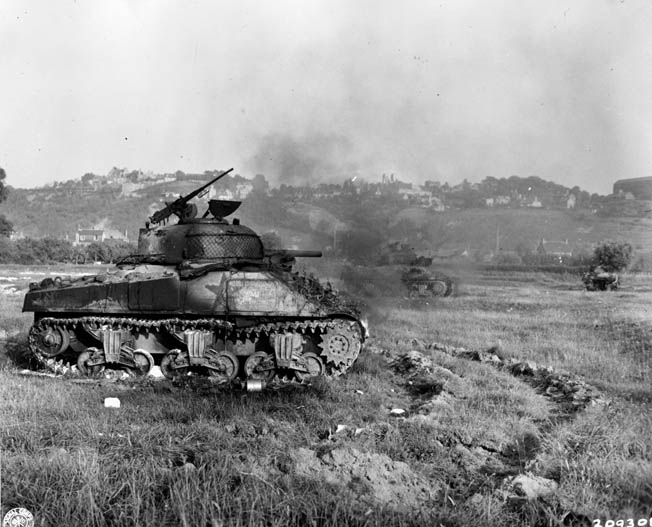
July 30 brought more frustration to the 6th Armored. Near the town of Brehal, the division’s armored reconnaissance squadron encountered a roadblock, with German infantry firing from the woods on both sides of the road. Light recon tanks engaged the attackers, swinging their turrets left and right, firing into the woods as they rolled on. At the edge of town the advance encountered another roadblock and called in P-47 Thunderbolt fighters to destroy it. After about a dozen strafing passes, the lead tank rammed the roadblock, opening passage for the rest of the division.
Tanks rolled into Brehal, shooting rounds into the town’s church steeple to suppress expected enemy fire. By the afternoon, tanks had pushed past another roadblock south of town and the road seemed open, but as a group of M8 armored cars and a half-track headed south they came under very accurate fire from a battery of German 88s. The M8s pushed forward only to discover more Germans setting up artillery pieces. The men began to think they had fallen into a trap until a group of Germans ran toward them with their arms raised in surrender.
The Americans lined the Germans up on one side of the road and were beginning to search them when an 88 opened up. The Americans dived for cover, but two Germans caught in the open were killed. Two M8s and the half-track also went up in flames. American artillery rounds eventually forced the German gunners to pull back, and the 6th Armored advanced another three miles before the sun went down.
The 4th also found itself in a tough fight. CCB’s western column pushed to the edge of Avranches, where it encountered a force of German tanks. Both sides opened fire and took losses until the Americans pulled back. The Germans now realized the importance of Avranches—that it was basically the cork in the bottle and to lose it would let the Americans flood into the heart of France. They were going to make the 4th Armored pay for its capture.
A Chaotic Fight
With CCB wrestling open the roads leading into Avranches, Wood ordered CCA to take the town. As the lead tanks roared up the road and into the mountaintop town, Luftwaffe fighters swooped down. Fortunately for the Americans, the pilots missed their target. The tankers pushed into town, engaging the Germans on the narrow roads and in alleys. Avranches, the American tankers were discovering, was a labyrinth of a town. Germans seemed to fire from every building while tanks seemed to lurk behind every corner.
A Hellcat commanded by Sergeant Joe Shedevy knocked out a German tank with a single shot. Just as the main gun fired, the crew spotted another enemy tank behind a hedgerow. The second German tank fired and missed. Shedevy’s crew quickly turned its gun and dispatched the panzer, again with a single shot. The action flushed out two more German tanks that fled, only to have one destroyed by follow-up Hellcats.
A Sherman tank commanded by Captain Murray Farmer pushed through the city and came head-to-head with a German Mark V Panther tank. Farmer immediately rammed the German broadside, blocking the transverse of the enemy gun. Farmer’s gunner then shot four rounds into the larger tank, both tanks rocking from the point-blank discharge. The German tankers tried to escape, only to be gunned down by Farmer with a machine gun. By sundown the Americans were established in Avranches, but the fight was far from over.
As the tanks of the 4th charged south, they left large numbers of Germans in their rear. Most surrendered peacefully, but some did not. Artillery units had to repulse attacks all day long, and support units had to fight off ambushes on their way to the front. As night approached, Americans pushing to the front heard German voices all around them. Any German with some fight left in him was trying to make it to Avranches.
That evening, northeast of the city, American tanks stumbled into a German column jammed closely together. The tankers raked the column with fire, but the enemy fought back until almost 2 am, when the decimated Germans pulled back. West of the city, a group of tanks was guarding a bridge over the See River when a column of German vehicles bearing red crosses rolled by. The Americans held their fire, assuming the Germans were merely evacuating their wounded into Avranches. Suddenly, the Germans opened fire on the Americans. The tanks immediately returned fire, destroying some of the vehicles. German infantry poured out of the vehicles and summarily surrendered to the tankers. The trucks, it turned out, were filled with ammunition.
The German prisoners warned of another column behind them. Their prediction came true around midnight, as the Americans began to come under small arms fire. This time it was an American ammunition truck that was hit, setting it ablaze. The American commander, worried that his tanks were now silhouetted against the flames, ordered his unit to withdraw east, abandoning the bridge. What the Germans had failed to achieve with their Red Cross trucks, they now achieved with the destruction of a single American truck. Enemy troops retreating from the east now had a channel into Avranches.
The next morning, tankers in the northeastern part of the city woke to find they had bivouacked in the same field as the Germans. Men raced for their weapons and machines. The fighting was confused, but the Americans held the field. One German prisoner, who was actually a Pole forced into duty with the Germans, pointed out the location of six enemy howitzers. Sherman tanks descended on the area destroying the guns and capturing almost 100 prisoners.
On the other side of Avranches, the Germans who had escaped across the See River bridge wound their way through the city and were heading south when they bumped into an American battalion of armored infantry. In the ensuing fight, Private William Witson, manning a .30-caliber machine gun, killed at least 50 Germans and destroyed 25 trucks, other vehicles and horses before the Germans cut him down. Later in the day, when Dager discovered the western approach to the city lay open, he dispatched other tanks to plug the gap.
Fighting continued in and around Avranches. German snipers flew a white flag from their position, but when the Americans exposed themselves to accept their surrender, they opened fire. An American officer, searching for a bazooka, took a hit from a sniper but relayed the sniper’s location as he lay exposed and dying. A tank rolled up and wiped out the nest with one shot from its main gun.
Securing the Gateway into Brittany
Avranches was declared secure by 1 pm, and by 4 pm a battalion of tanks raced south to secure the four bridges over the Selune River, the most important of which was the Pontaubault Bridge, the gateway into Brittany. The day before, planes flying over Avranches reported the vital bridge intact. It had survived U.S. bombing and escaped demolition by the Germans. Patton would later claim the bridge dated back to the battles of William the Conqueror.
After plowing through some stiff resistance on the southern edge of the city, the tankers reached their objectives without incident. At one bridge, the battalion commander checked on his men’s status. Finding everything fine, he roared off in his Sherman only to surprise a German tank lurking nearby. The American quickly fired three armor-piercing shells into the enemy. It was the first kill for Lieutenant Colonel Creighton Abrams.
On the same day, 6th Armored made great progress. It quickly advanced three miles to the coastal town of Granville. By that afternoon, Middleton ordered Grow to head for Avranches. Seeing that tanks and vehicles from both divisions would clog the roads, Grow ordered his men to drive only on the seaward side of the roads, leaving the other side for the 4th. He also contacted Wood, explaining the situation and figuring out bivouac areas for the two divisions.
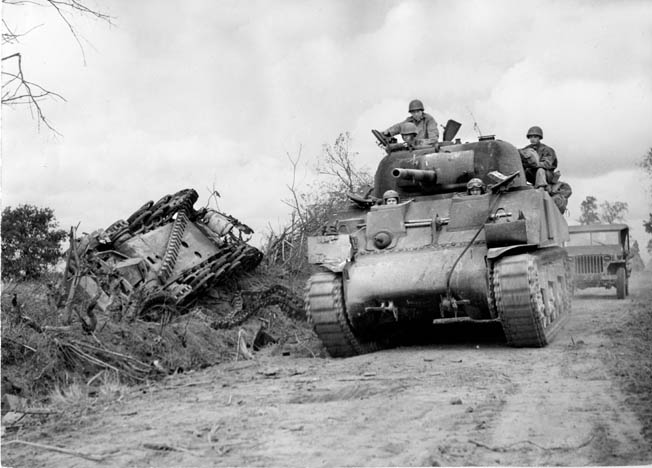
By 9 pm, the 6th arrived in Avranches and headed south to relieve the tanks guarding the bridges out of Normandy. The destruction along the roads shocked Pfc. Harry Cruise. He saw dead horses, destroyed vehicles, and a dead American soldier with a pick axe in his back. “That’s when I knew what war was,” recalled Cruise.
When Grow saw the conditions of the town, buildings in rubble and streets filled with debris, he immediately ordered his bulldozers forward to clear the streets. Then he placed MPs along the roads to keep the traffic moving.
The Third Army Operational
That night, Patton visited Middleton, who reported his corps’ progress, adding that he had captured the bridges and dams along the Selune but had been unable to reach Bradley for further orders. Patton told him that throughout history it had always been fatal not to cross a river. While they were discussing the situation, word arrived that the Pontaubault was still intact. Patton, knowing a good omen when he saw it, ordered the 6th Armored across. He told Middleton that he wanted the 6th, along with the 79th Infantry Division, to head west for Brest and the 4th, with the 8th Infantry Division, to head south for Rennes. Patton’s army would be born on the move.
On August 1, Third Army became operational. Middleton handed his new commander the perfect position to begin exploiting Operation Cobra’s results. In four days, Middleton had advanced some 44 miles and ripped open the German left flank. His men had captured over 7,000 prisoners at the cost of only 700 American casualties and forced an entrance into Brittany. His corps had even advanced 15 miles farther than Collins’s VII Corps, which had been tasked with the breakout.
Middleton joined the XX Corps under Walton Walker and XV Corps under Wade Haislip as Patton pushed his army south, west, and east, setting up the destruction of the Germans in the Falaise Pocket. All three corps commanders, as well as their army leader, found themselves working crossing guard duty in the rubble-strewn streets around Avranches. Their greatest duty became squeezing the Third Army through the town. They would eventually push seven divisions through in 72 hours.
Operation Cobra in Retrospect
While Grow’s advance had been impressive, it was Wood who stole the spotlight from both the 6th and 3rd Armored Divisions. His upfront and at times fearless leadership kept his tanks and half-tracks aggressively driving forward and engaging the enemy.
The 4th Armored Division proved itself in Brittany and would find itself leading Patton’s attack across France. It would later bull its way into surrounded Bastogne in one of the most celebrated actions of the Battle of the Bulge. Grow would perfect his battlefield leadership in his own race to Brest, but the 6th would soon be transferred to the Ninth Army.
Troy Middleton, not Patton, proved the success of armored divisional warfare. Historians have argued that Patton’s unseen influence could be sensed in the push to Avranches, but the records of the 6th and 4th Armored Divisions prove that Middleton ordered the tanks forward on the morning of July 28, while Patton found out about his temporary command of VIII Corps later that night. While Patton did exert his influence on General Grow at the Sienne River on July 29, he spent the next two days visiting rear echelon units, flying over St. Lo, and setting up Third Army headquarters while the battles raged. The fight for Avranches belonged to Wood and to Middleton.
The race for Avranches also brought an end to the Americans fighting in swamps and hedgerows for incremental gains. Beginning on August 1, the Third Army would run rampant across the French countryside, liberating towns at will, scooping up batches of confused and exhausted German prisoners, and running off the maps the men had been issued for the campaign. The army’s historic drive would last until September, when supply problems behind the line overtook any enemy resistance in front of it.
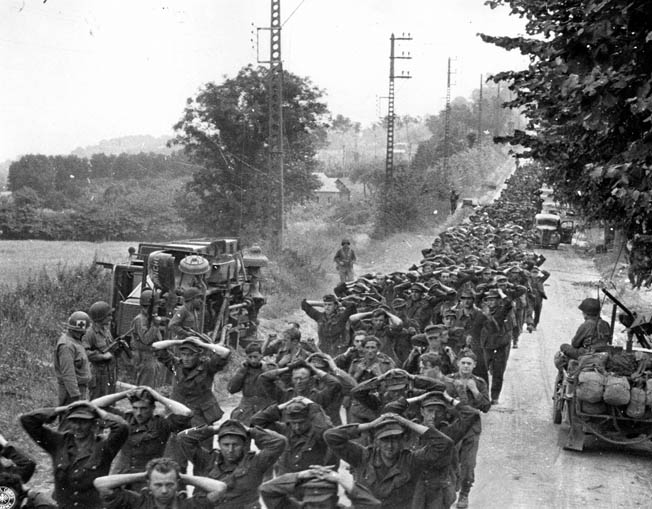
In the end, Bradley got exactly what he was looking for: a way to win the war faster. The Americans raced across France for the next month. With the German left flank exposed, Bradley had the opportunity to repeat the Avranches operation and encircle the Germans in northern France, simply by turning east. But Bradley turned west and used his armored divisions to capture Brittany’s ports, while the Germans in the east were given a respite. The ports he so eagerly sought were but a mirage. The Germans defended them for months, while the bulk of the Allied supplies continued to come from the beaches of Normandy. The future five-star general did not appreciate what armor could do, nor did he understand the opportunity in front of him.
The Germans appreciated what Middleton had achieved. On the same day the 4th Armored declared Avranches secure, Field Marshal Guenther von Kluge, the German theater commander, told his chief of staff: “Someone has to tell the Führer that if the Americans get through at Avranches, they will be out of the woods. They’ll be able to do what they please.”
When Adolf Hitler got word of the catastrophe, he targeted Avranches for the first major counterattack on the Western Front. It would end in disaster.
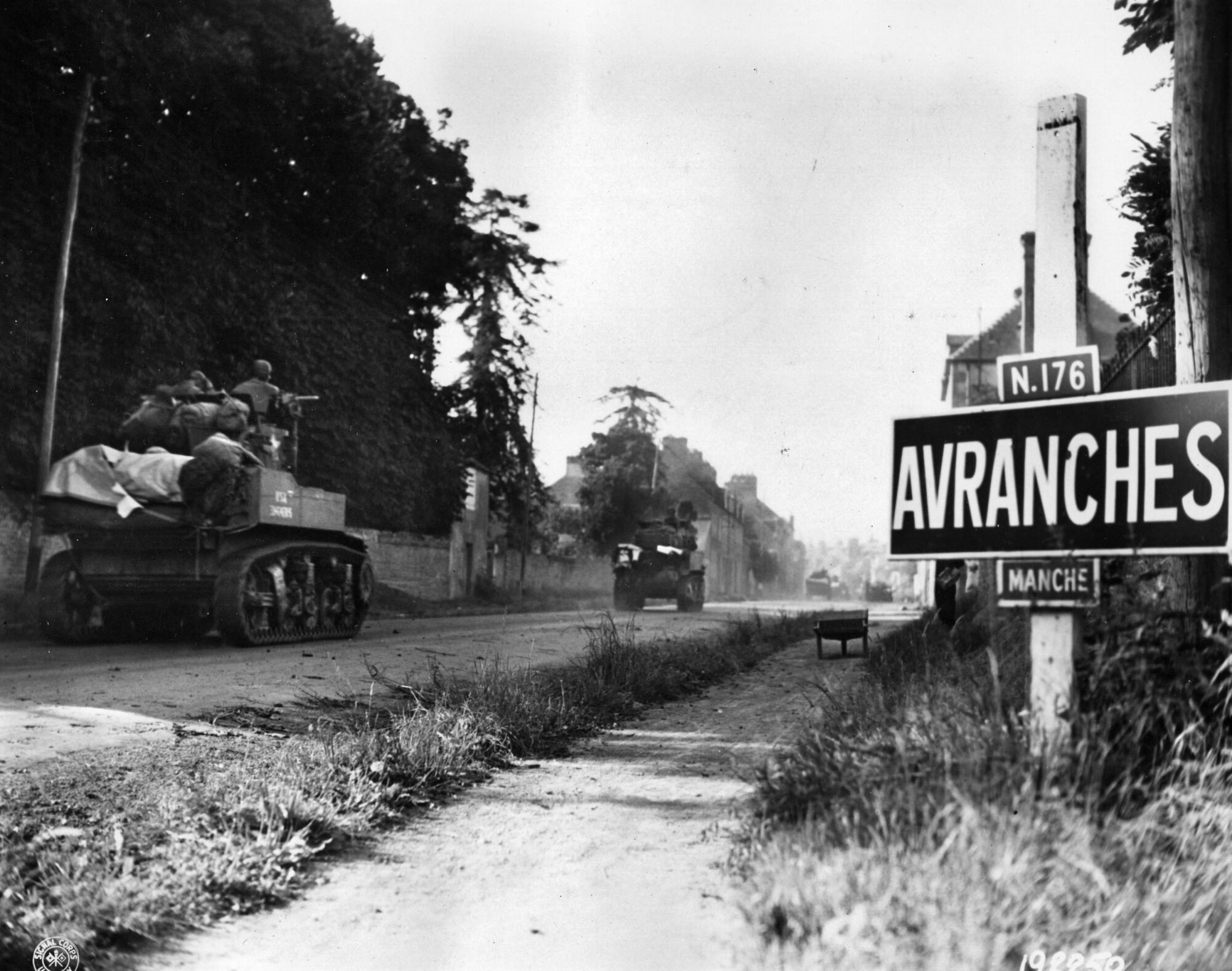
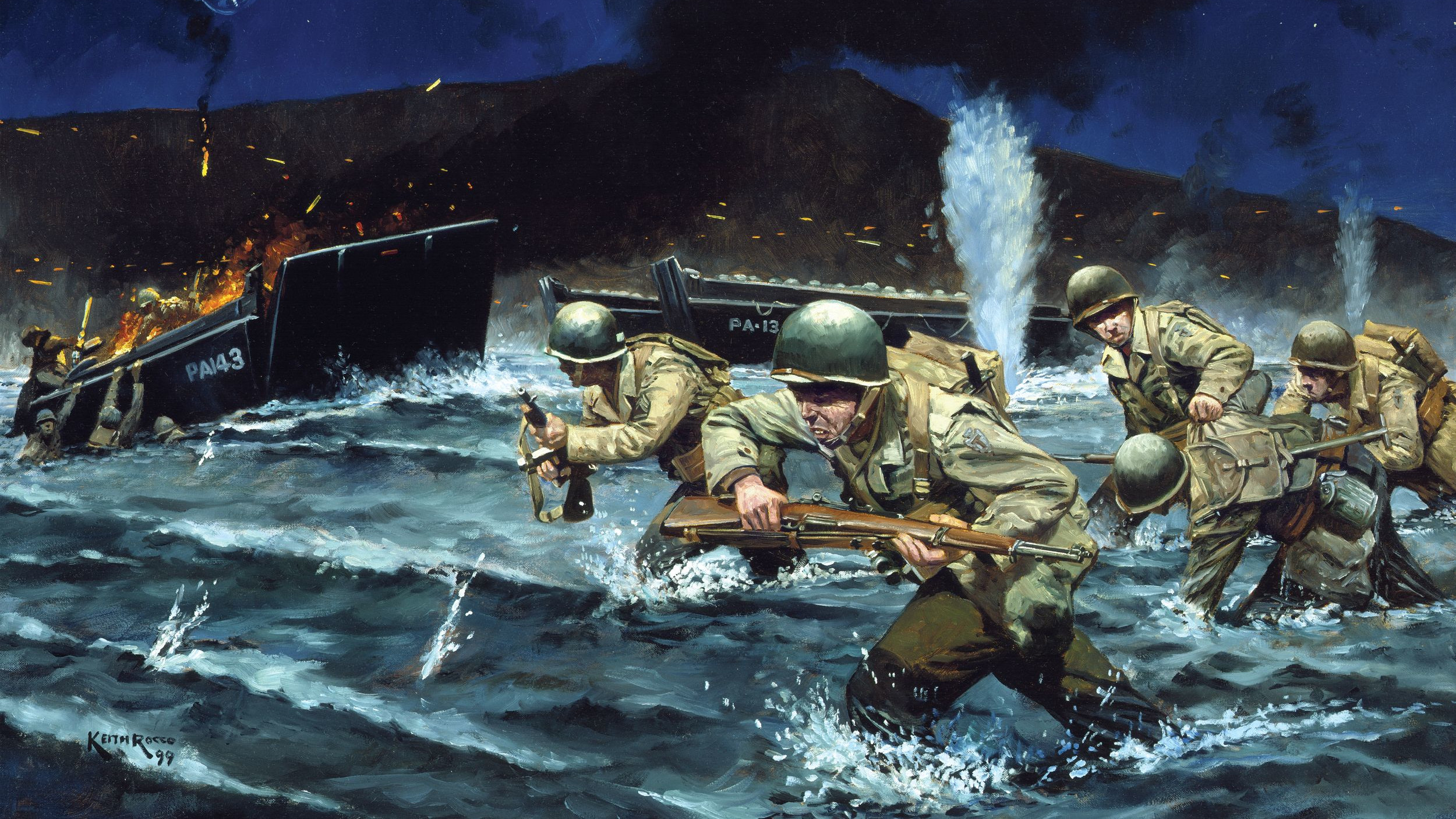

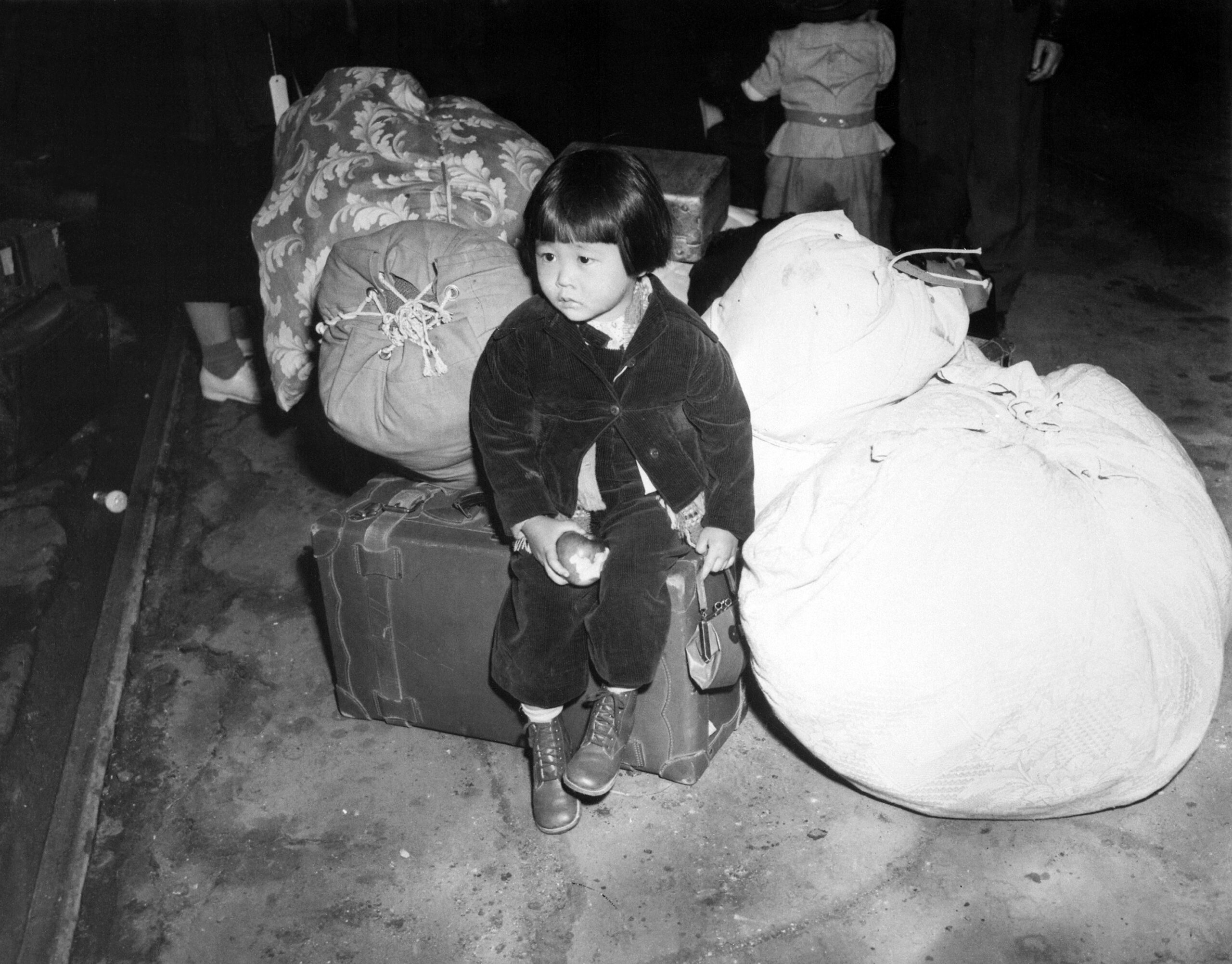
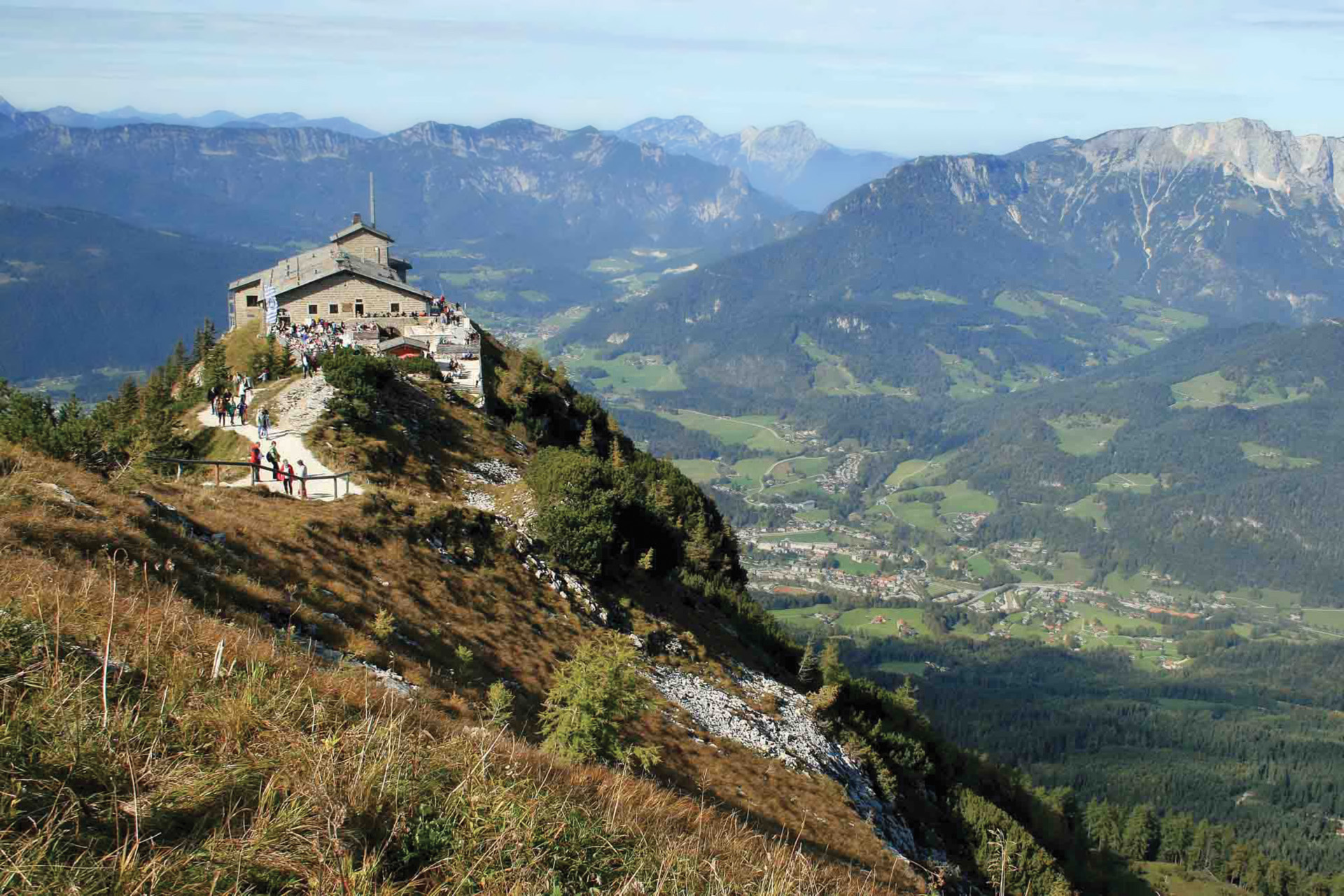
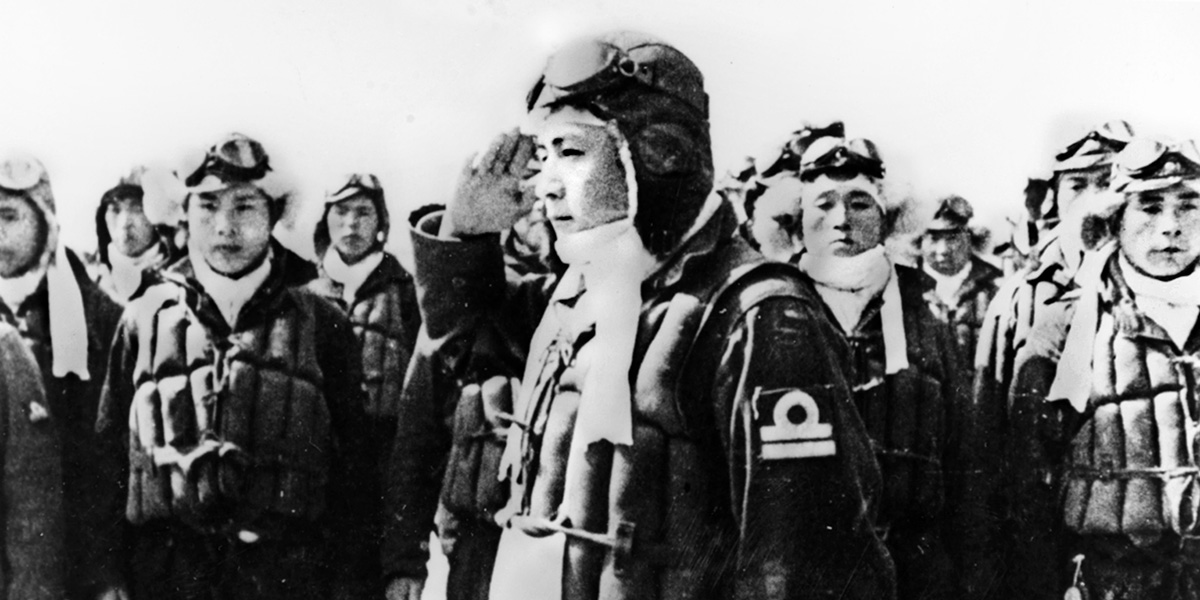
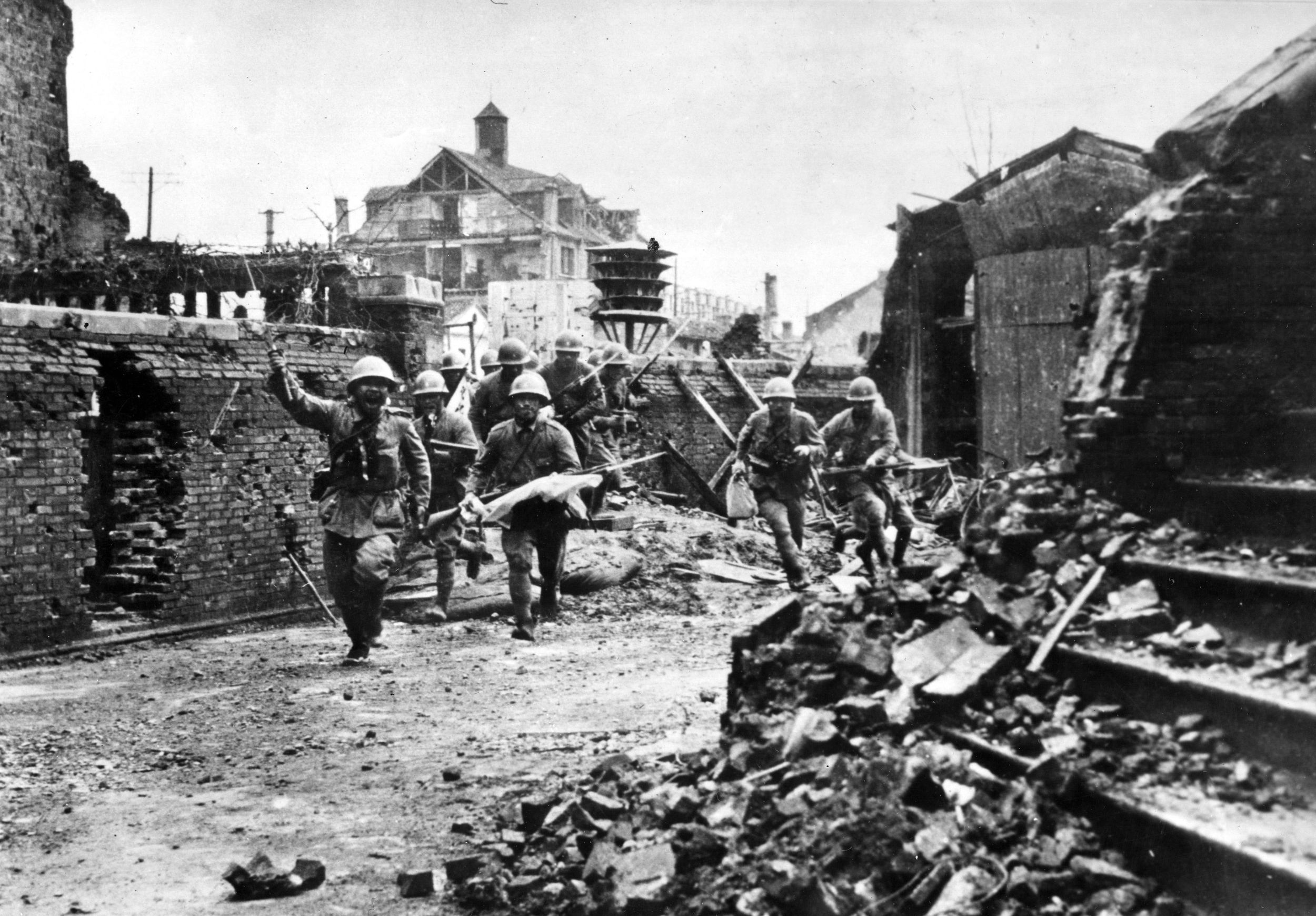
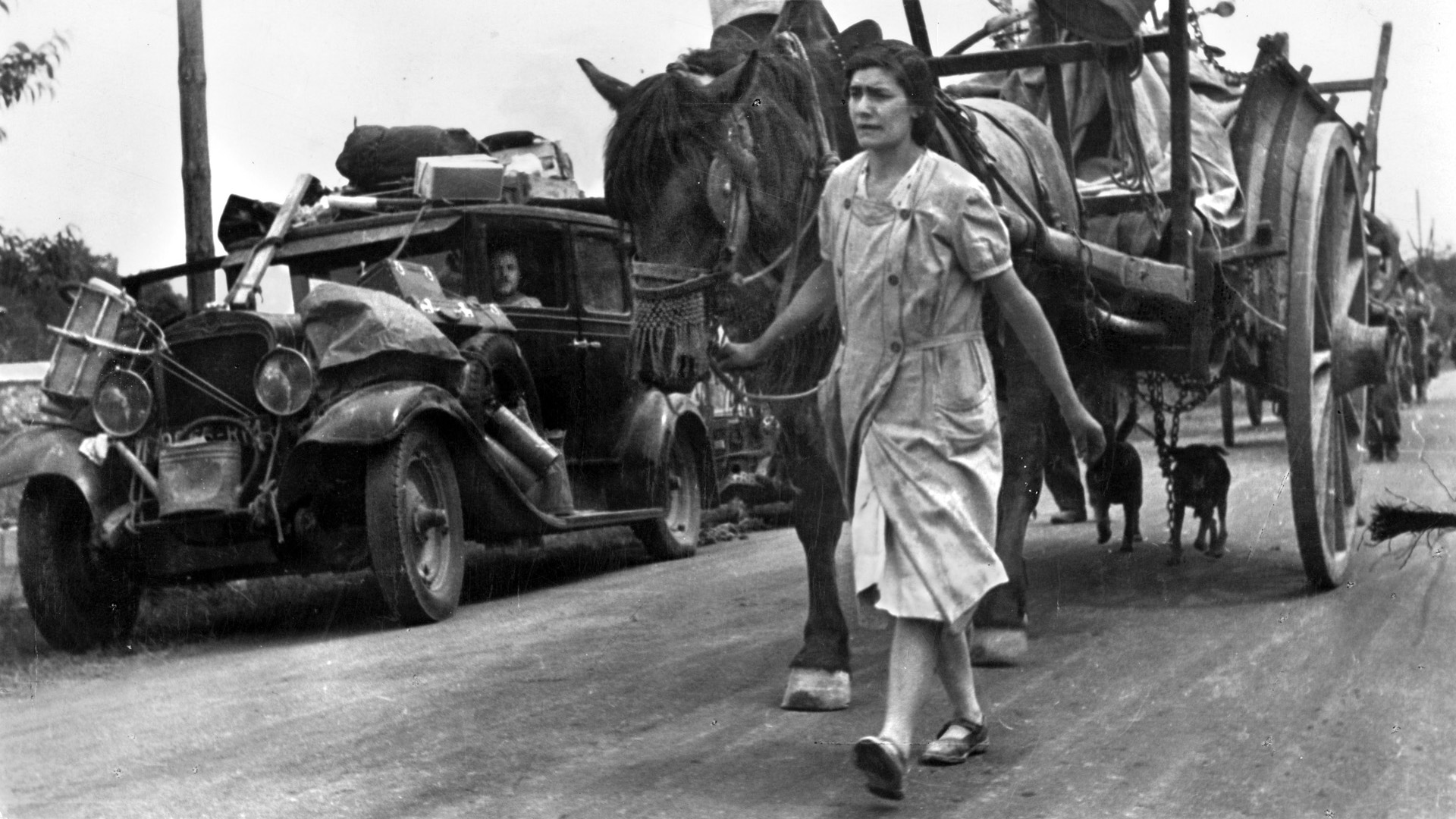
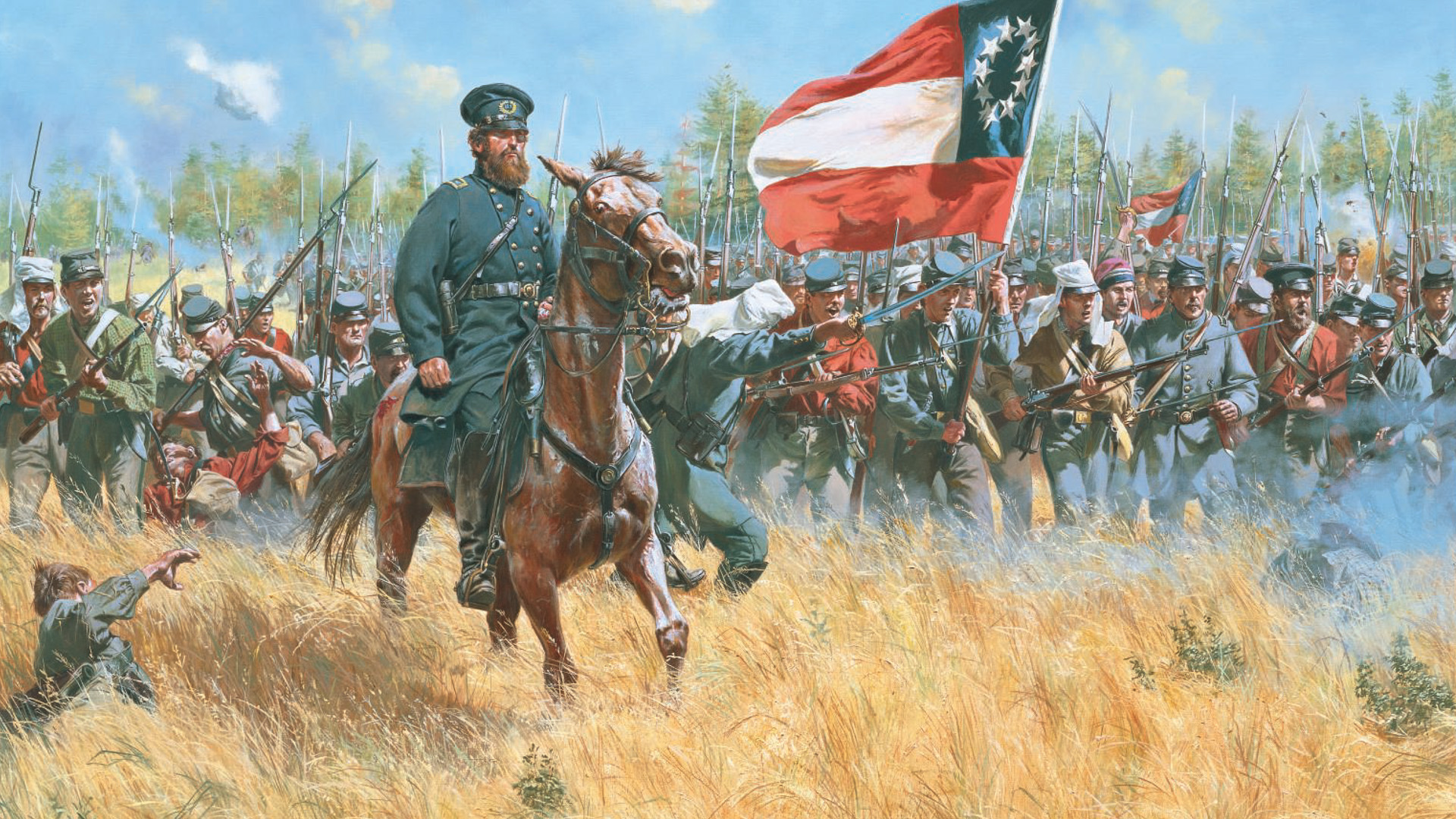
Mein Vater wurde während des 2.Weltkrieges in Avranches gefangen genommen.
da ich der englischen Sprache nicht mächtig bin, wäre ich froh diesen gesamten Text in Deutsch lesen zu können.